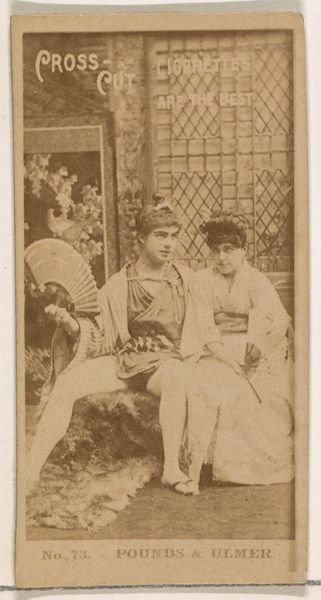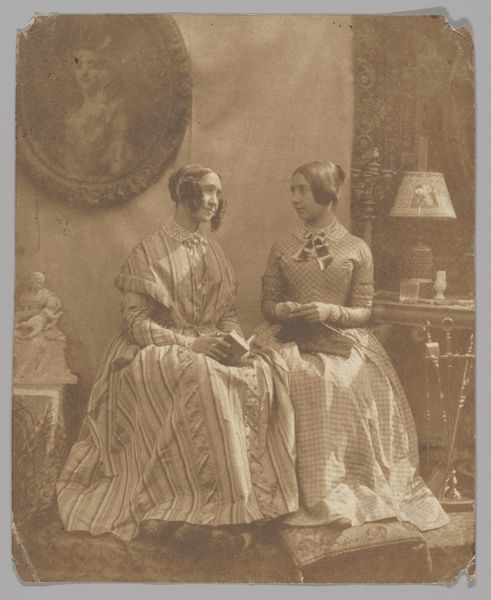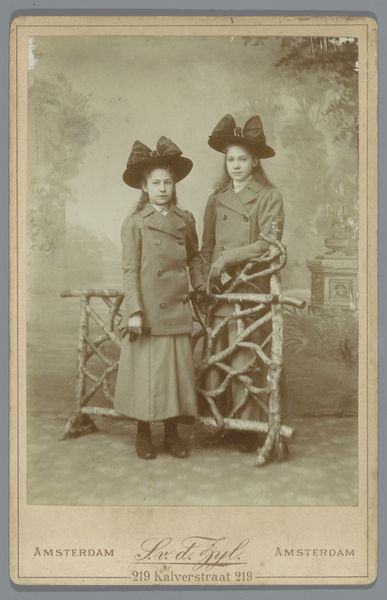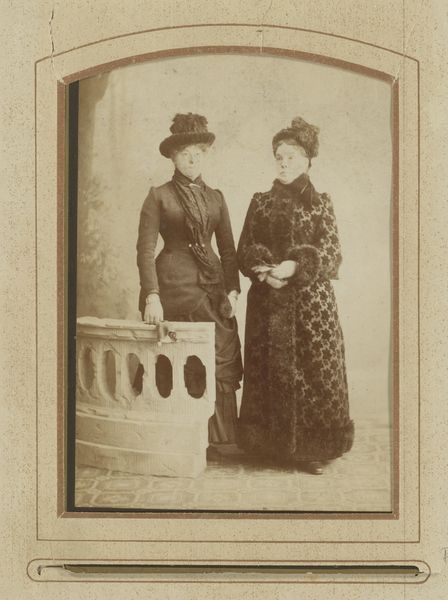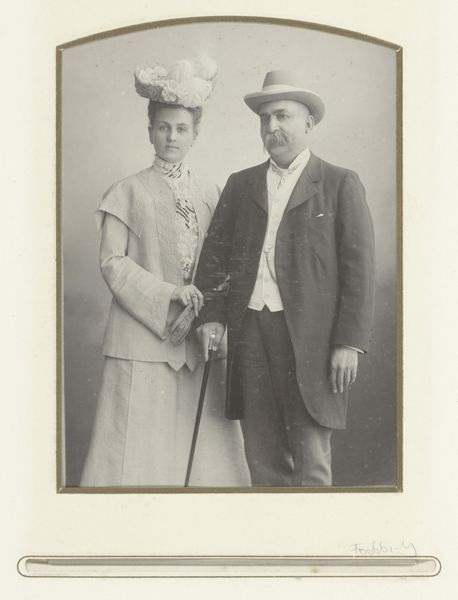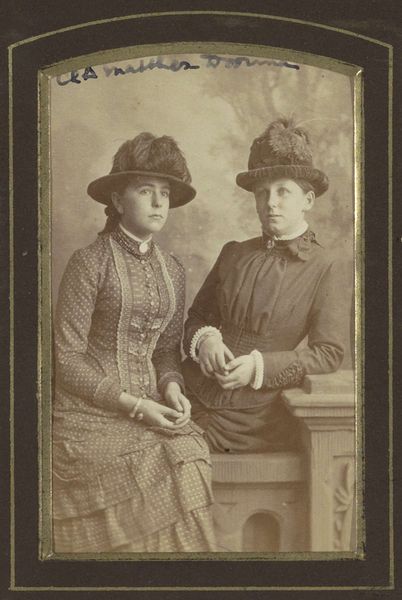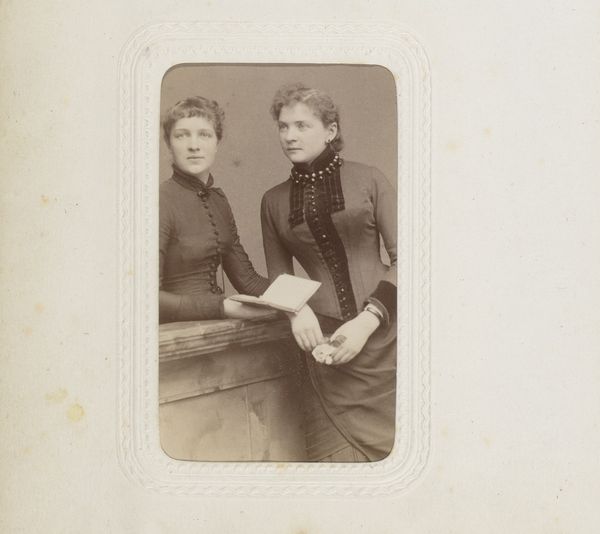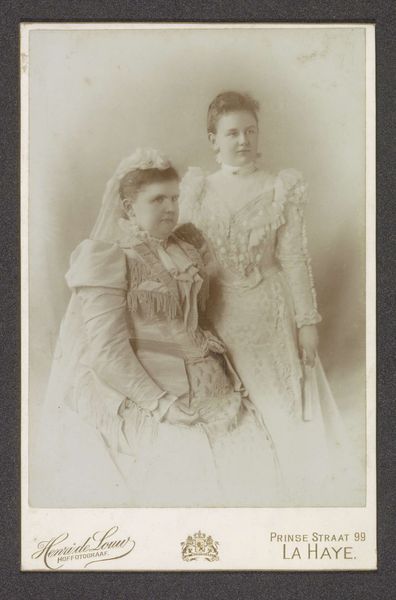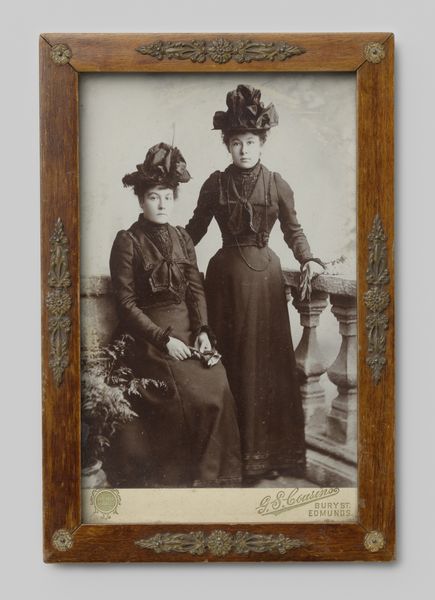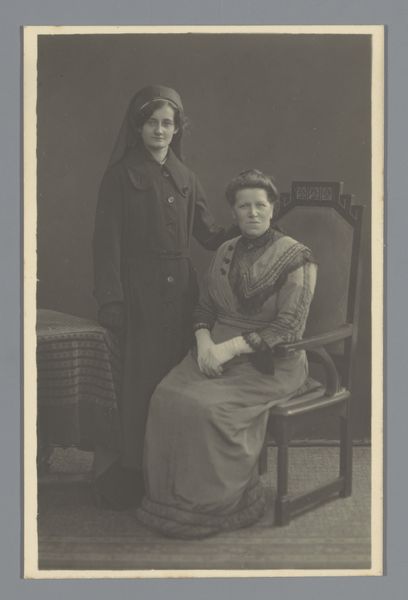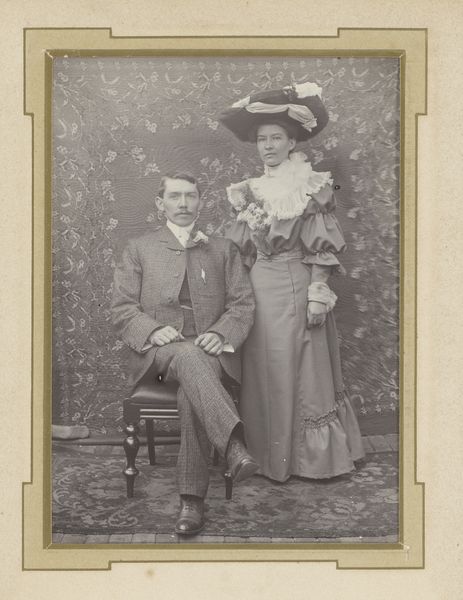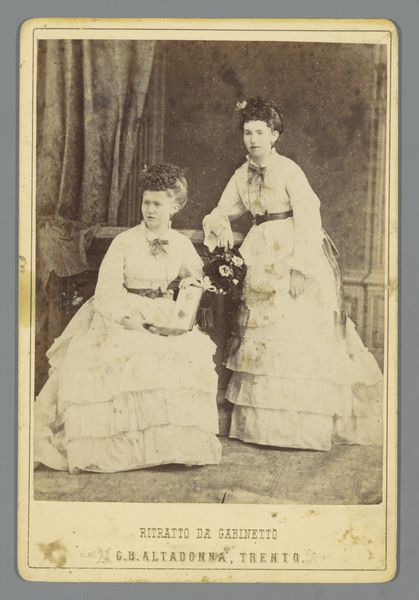
photography
#
portrait
#
still-life-photography
#
figuration
#
photography
#
historical fashion
#
coloured pencil
#
19th century
Dimensions: height mm, width mm
Copyright: Rijks Museum: Open Domain
Curator: Let's examine this striking image entitled "Portret van twee onbekende vrouwen met een tennisracket," created sometime between 1880 and 1900 by Bender & Co. Editor: Immediately, I’m struck by the subdued tones, the way the sepia tint renders everything in shades of brown. And look at the crisp detail—you can almost feel the texture of their wool coats! Curator: It’s fascinating how photography was developing its role in solidifying class distinctions. Here, we see evidence of the democratization of leisure. Tennis was becoming more accessible, though clearly, still enjoyed by the middle and upper classes. Their attire speaks volumes about societal expectations of women at the time. Editor: Absolutely, those sleeves, though! I'd bet they used considerable material, perhaps even a structured element inside for lift. Consider the labor in manufacturing those garments – from textile production to the precise tailoring. These weren’t just ready-to-wear, off-the-rack items. Curator: Indeed. The presence of the tennis racket also raises questions about performance versus participation. Were they serious players or merely engaging in a fashionable pastime for social visibility? Bender & Co., operating at 126 George Street, Croydon, provided access to this visibility through their portraits. The act of commissioning a photograph becomes a form of social currency. Editor: I am looking closely at that racket; the way it is held, posed, seems less about its practical function and more as a symbol of leisure and status. Wood and string; such humble components crafted into a tool that signifies a whole lifestyle. Curator: It's a snapshot of a moment in time where new forms of leisure collided with rigid social structures. What appears as a simple portrait opens a window into late 19th-century society, and its aspirations and complexities. Editor: Yes, a photograph revealing how even an object, in this case, a tennis racket, could signify status and leisure through labor and material in 1890. It makes you wonder about all that is left out.
Comments
No comments
Be the first to comment and join the conversation on the ultimate creative platform.

